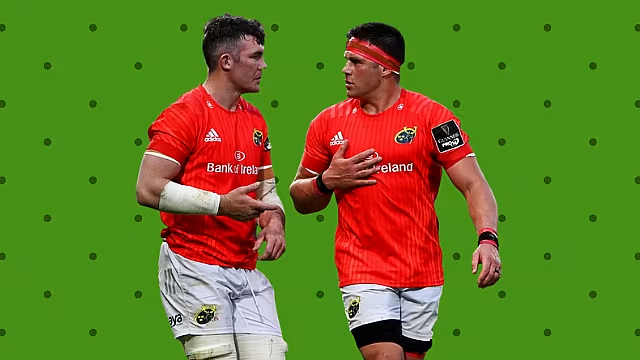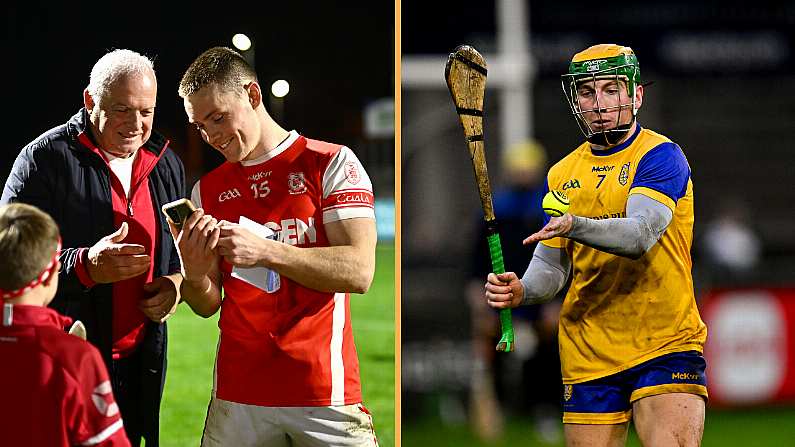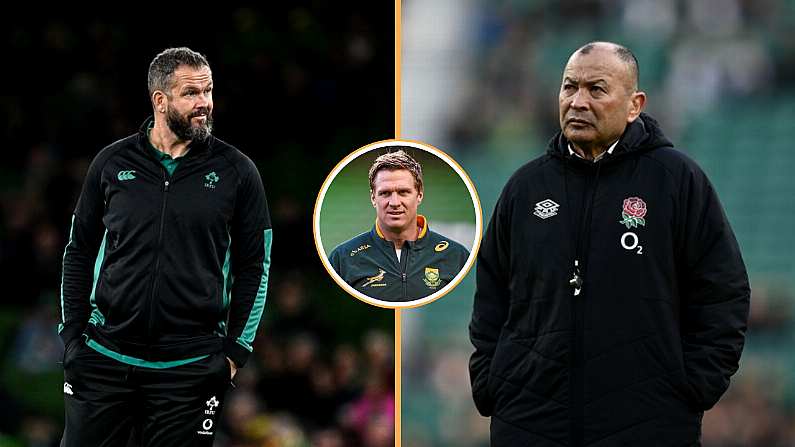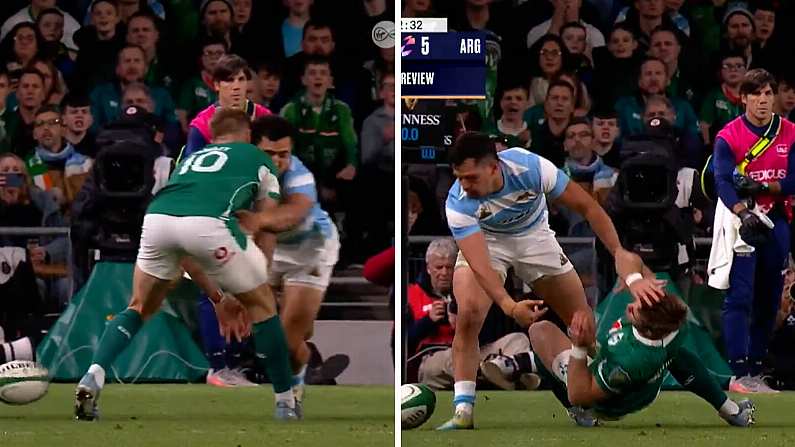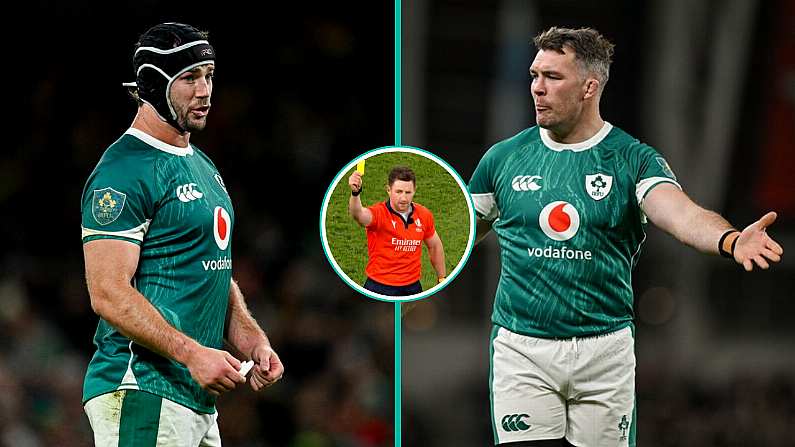Rugby hipsters often go on about the 'subtle details' of the sport. Ever-changing descriptions of different styles actions and positions can be very confusing. Why can't props play both sides if both positions are "prop". What's the difference between a 6 and a 7? And what the hell is the difference between an inside and outside centre?
Never fear, here at Balls.ie, we will help explain the difference between what appear to be similar positions, so you can be that guy down the pub telling everyone more than they know. Sure isn't that every Irishman's dream?
The difference between an inside and outside centre
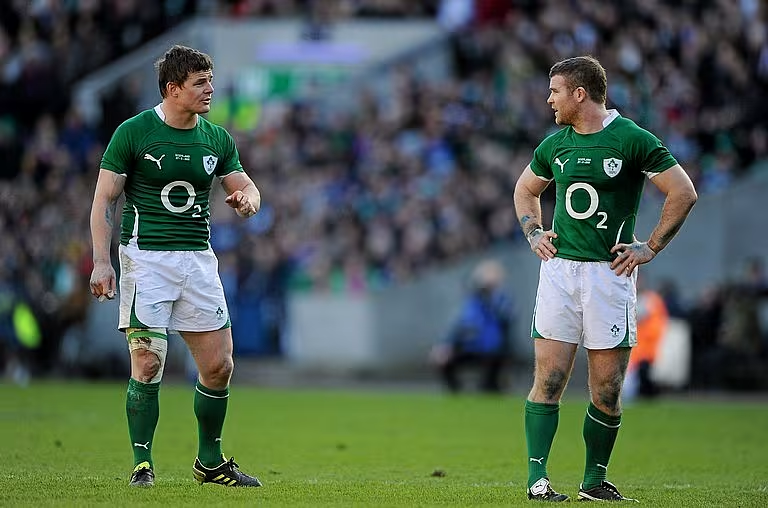
"Second Five-Eighth" is a fancy word for an inside/first centre. It's most used in the southern hemisphere, and refers to a playmaking 12, and it's popularity is rising in Europe, perhaps due to the increased number of imports coming into France and England. We don't bother with such elegant or fancy maths-based names, merely referring to the position as an inside centre, or to be old school, "first centre". The name for the player just outside him is a lot easier, in that it's merely an "outside centre" or a "second centre",or down south simply a "centre".
Onto the real talk. The most important part of a rugby team's defence is their midfield. That's the centre partnership to you and me. They are responsible for organising the defensive line (13) and are there to assist outhalves (12) when they have to deal with 120kg worth of forwards running at them. The centres will be the players you see attempting to shut down the oppositions attacks.
What made Brian O'Driscoll so good in defence was his ability to read when to shoot out of the defensive line, and when to hold back and keep a steady line. Depending on the defensive scheme, this job usually falls to a 13. Time it wrong and you've just given the opposition a big gap to slide through, but time it right and you more than likely have another hit added to your YouTube reel.

An outside centre is usually the last player in the line, and tries to either shepherd the opposition out to touch, or keep them back inside so they can be tackled by the covering defender. This can be a very challenging job, and is often the reason why talented players may not make it in the position before being moved out to the wing where the defensive responsibility is much less.
This seems like a very important job, but the success of the outside centre is dependent on his trusting of his inside partner. An outside centre needs to trust his centre partner to be able to cover across and tackle an attacker, should they try to cut a line inside while the outside centre tried to cover the outside options. An outside centre can't stop attacks out wide unless they trust that the inside centre stopping attacks inside.
The below video does an excellent job to highlight why an outside centre needs to trust his inside player to make the tackle. In the last clip, Davies doesn't trust that O'Driscoll is going to make the tackle on O'Connor, and bites inside, allowing O'Connor to give Adam Ashley Cooper the easiest of run ins because Davies can't then turn around and make what should have been an easy tackle if he trusted his inside defender.
In attack, a new wave of playing the game of rugby slightly muddling the differences between inside and outside centre in the early 2010s. The success of Kurtley Beale playing 12 for the Super Rugby champions, Toulon's increased threat with Matt Giteau at 12, and Leinster's inability to deny Ian Madigan a place in the starting lineup led to a greater use of a distributor at 12, with confusion rising as the popularity of the phrase "second five-eighth" increases on these shores.
The second popular method that teams use is to almost swap their roles. For this to work effectively, it needs a playmaking type of outside centre, of which there aren't a huge amount of. This outside centre is a lot more reliant on his distribution skills, and intelligent lines of running through a defence, as opposed to running straight like Jamie Roberts is known to do.

This line-running is an extremely valuable skill, and is why a lot of players who can pick good lines from further out at fullback, don't seem to do similar when playing at outside centre. In essence, while this appears to be a straight swap of attacking responsibilities from option A, it places a lot more demands on a 13. The most successful player of the past 15 years to play like this is by far Brian O'Driscoll, and it's why he's so revered throughout the world.
Between the two centres, they need a kicking option (usually the inside centre), a strong hard running option, and a playmaker. Sometimes you get inside centres that are a mix between big and playmaking like Ma'a Nonu, Sonny Bill Williams who need a calmer defensive presence like Conrad Smith beside them.
But, for the most part, it's much easier to think of inside centres as outhalves with better defensive skills and less game-management, while outside centres are wingers with better defensive awareness and worse aerial ability. Special players can play both positions (Gordon D'Arcy) but for the most part, each 12 requires certain skills, and each 13 requires different skills.
Now go forth and be that guy in the pub, telling anyone who makes the mistake of listening to you, all about the "second five-eighth".
SEE ALSO: The Difference Between An Openside And Blindside Flanker
